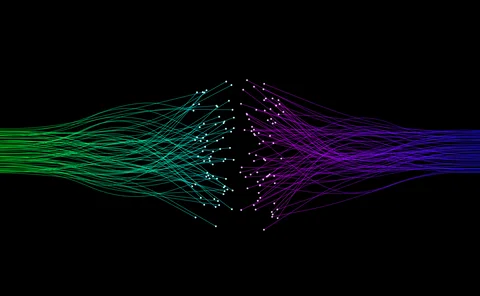Compliance
‘Barcodes’ for market data and how they’ll revolutionize contract compliance
The IMD Wrap: Several recent initiatives could ease arduous data audit and reporting processes. But they need buy-in from all parties if all parties are to benefit.
From frozen assets to fire sales: The datasets to prevent your investments going up in smoke
The IMD Wrap: As severe weather conditions become more commonplace, Max wonders which datasets will prove most useful for those navigating a changing world.
Symphony looks to cloud, AI for enhanced trader voice
The communication and collaboration platform provider is utilizing modern technology to grow its network of services and users.
J&J debuts AI data contracts management tool
J&J’s new GARD service will use AI to help data pros query data contracts and license agreements.
New data granularity rules create opportunities for regtech providers
As evidence, Regnology increased its presence in North America with the addition of Vermeg's Agile business—its 8th acquisition in three years—following a period of constriction and consolidation in the market.
MIAX taps DataBP for exchange data licensing, custom contracts
To support planned growth of its data business, the exchange group has implemented DataBP’s platform to strengthen its licensing process and scale up its distribution capabilities in anticipation of end-user demand.
BlackRock, BNY see T+1 success in industry collaboration, old frameworks
Industry testing and lessons from the last settlement change from T+3 to T+2 were some of the components that made the May transition run smoothly.
Deutsche Bank experiments with regulatory GenAI tool
Project Aggie can complete what business domain experts typically do in a few hours in under five minutes, the bank says.
Preparing for the gathering storm
The Markets in Crypto-Assets (Mica) regulation came into force across the European Union on June 29 to enhance the transparency and integrity of the industry’s burgeoning crypto markets. Travis Schwab, CEO of Eventus, discusses his firm’s Mica strategy…
The SEC needs a hand with artificial intelligence
The SEC wants to take a tough stance on AI, but it has a talent problem… or a marketing problem. Or both…
Reading the bones: Citi, BNY, Morgan Stanley invest in AI, alt data, & private markets
Investment arms at large US banks are taken with emerging technologies such as generative AI, alternative and unstructured data, and private markets as they look to partner with, acquire, and invest in leading startups.
The costly sanctions risks hiding in your supply chain
In an age of geopolitical instability and rising fines, financial firms need to dig deep into the securities they invest in and the issuing company’s network of suppliers and associates.
US Supreme Court clips SEC’s wings with recent rulings
The Supreme Court made a host of decisions at the start of July that spell trouble for regulators—including the SEC.
Waters Rankings 2024 winner’s interview: Vneuron
Vneuron Risk & Compliance won the best AML compliance solution provider category in this year’s Waters Rankings.
Finra clears hurdle with CAT launch, but several others remain
Two major components of the consolidated audit trail are now in place. But wrangling over the CAT’s future continues.
AI could cut time for money laundering checks by 99%
Leading crypto exchange rolling out large language model for enhanced due diligence checks.
Deciphering Dora and developing operational resilience
This webinar explores how firms can develop the necessary operational resilience to maintain the integrity of their services in the event of operational disruption
The coming AI revolution in QIS
The first machine learning-based equity indexes launched in 2019. They are finally gaining traction with investors.
Hong Kong looks for digital response to trade reporting burden
New swaps reporting framework will include more fields than requirements in US or Singapore.
Price check: Is your firm keeping pace with IPV?
How growing regulatory pressure around data is affecting banks’ pricing and valuation control.
Bank-led consortium takes aim at position reporting
Five banks, including Barclays, BNP Paribas, Goldman Sachs and HSBC, have joined forces to mitigate interpretation and implementation errors in position reporting disclosures.























